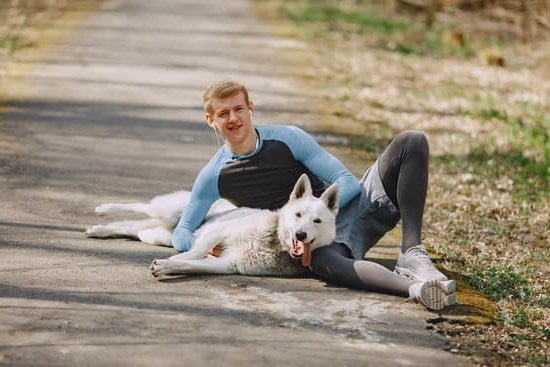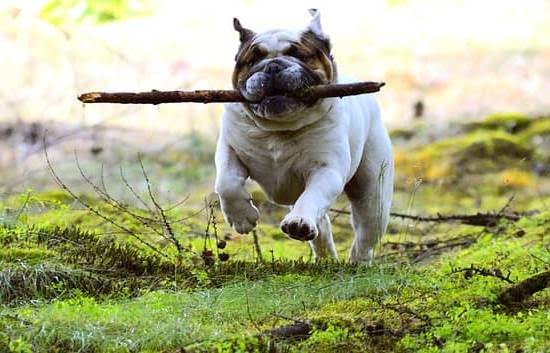Controlling dog reproduction is a crucial aspect of responsible pet ownership. The decision to spay or neuter your dog not only prevents unwanted litters but also contributes to the overall well-being of your furry companion. However, for owners of intact dogs who are considering alternatives to surgical sterilization, the question arises: can you train an intact dog not to reproduce?
Understanding the basics of dog reproduction is essential in addressing this query. Intact dogs go through distinct breeding cycles with specific behaviors and physical changes. These natural instincts can be challenging for owners to manage, especially if they are hoping to prevent unplanned pregnancies. The risks and responsibilities that come with owning an intact dog extend beyond the possibility of unwanted breeding, making it crucial to explore effective strategies for preventing reproduction.
While spaying or neutering remains the most common method of population control, training techniques can also play a role in curbing mating behaviors in intact dogs. Positive reinforcement techniques have shown promise in redirecting these natural instincts towards more desirable behaviors.
By consistently reinforcing desired actions and providing mental stimulation, pet owners may be able to discourage mating behaviors effectively. Consulting with a professional, such as a veterinarian or dog trainer, can provide invaluable guidance in implementing successful training methods tailored to individual needs.
The Basics of Dog Reproduction
Dogs are known for their instinctual behavior when it comes to mating and reproduction. Understanding the breeding cycle in intact dogs is crucial for pet owners who wish to prevent unplanned litters and promote responsible pet ownership. The reproductive cycle in female dogs typically occurs twice a year, while male dogs are always ready to mate. It is important for dog owners to be aware of the signs of heat in females and the behaviors associated with mating in males.
To effectively prevent your intact dog from reproducing, it is essential to grasp the basics of their breeding cycle. Female dogs go through different stages during their heat cycle, including proestrus, estrus, diestrus, and anestrus. During estrus, which is the phase when a female dog is most fertile, they may exhibit behaviors such as restlessness, increased urination, and attracting male dogs.
Male dogs can also display mating behaviors such as mounting and roaming in search of a mate. Being knowledgeable about these stages can help you anticipate and manage your dog’s reproductive instincts.
Training plays a significant role in controlling mating behaviors in intact dogs. While spaying or neutering is the most effective method to prevent reproduction, training techniques can also be employed to discourage breeding tendencies. Positive reinforcement strategies can be utilized to redirect your dog’s focus away from mating behaviors and reinforce obedience commands. By consistently rewarding desired behaviors and providing mental stimulation through training activities, you can train an intact dog not to reproduce.
Challenges of Having an Intact Dog
Intact dogs, those who have not been spayed or neutered, can present a unique set of challenges for pet owners. One of the primary risks associated with intact dogs is the potential for unwanted or accidental litters. Female intact dogs can go into heat cycles, during which they release pheromones that attract male dogs from far distances.
This increases the likelihood of mating and unplanned pregnancies. Male intact dogs, on the other hand, may exhibit more aggressive behavior and a strong desire to roam in search of females in heat.
In addition to the risk of unwanted breeding, owning an intact dog comes with significant responsibilities. Intact dogs require careful supervision and management to prevent mating behaviors. This includes closely monitoring their interactions with other dogs, especially during walks or visits to dog parks. Furthermore, owners of intact dogs must be prepared to handle any potential behavioral changes that may arise due to hormonal influences.
Despite these challenges, some pet owners may wonder if they can train an intact dog not to reproduce through behavioral interventions. While training techniques can help discourage mating behaviors to some extent, it is important to understand that training alone may not be sufficient to prevent reproduction in all cases.
The underlying drive to mate is instinctual and deeply ingrained in most animals. However, positive reinforcement techniques can be used effectively in conjunction with training to redirect your dog’s focus and provide alternative outlets for their energy and instincts.
| Intact Dog Challenges | Risks |
|---|---|
| Accidental litters | Increased likelihood of unplanned pregnancies |
| Behavioral changes | Hormonal influences leading to aggression or roaming tendencies |
Benefits of Spaying or Neutering
Spaying or neutering your dog comes with a myriad of benefits beyond just preventing unwanted litters of puppies. One significant advantage is the potential improvement in behavior that comes with sterilization. Intact dogs, especially those in heat or experiencing mating instincts, can exhibit challenging behaviors such as roaming, aggression, and excessive vocalization. By spaying or neutering your dog, you can often see a reduction in these behaviors, leading to a calmer and more well-behaved pet.
Another crucial benefit of spaying or neutering is the positive impact on your dog’s health. Intact female dogs are at risk of developing pyometra, a life-threatening infection of the uterus. Additionally, they have a higher chance of developing mammary tumors if not spayed before their first heat cycle.
Neutering male dogs can prevent testicular cancer and reduce the risk of prostate issues later in life. These health benefits can contribute to a longer and healthier life for your furry companion.
In addition to behavioral improvements and health advantages, spaying or neutering can also benefit the community at large by reducing the number of homeless animals. Each year, millions of dogs end up in shelters, with many facing euthanasia due to overpopulation.
By taking responsibility for sterilizing your pet, you are actively participating in efforts to control animal populations and decrease the strain on animal shelters and rescues. This simple act can make a significant difference in creating a more humane environment for all pets.
| Advantages | Benefits |
|---|---|
| Improved Behavior | Reduction in challenging behaviors such as roaming and aggression |
| Health Benefits | Prevention of serious conditions like pyometra and testicular cancer |
| Community Impact | Contribution to reducing animal overpopulation and shelter euthanasia rates |
Can Training Prevent Reproduction
As a responsible dog owner, it is crucial to consider the impact of uncontrolled breeding in your canine companion. While spaying or neutering is the most effective way to prevent unwanted litters, some individuals may wonder if training alone can deter mating behaviors in intact dogs. Training can play a role in managing a dog’s reproductive instincts, but it is not a foolproof method.
Understanding Reproductive Behaviors
It is important to recognize that intact dogs are driven by their natural instincts, which include mating behaviors. These instincts can be particularly strong during the breeding season when hormones are at their peak. Males may exhibit mounting, roaming, and urine marking behaviors, while females may attract males with scent signals and display receptive behavior when they are in heat. Training can help manage these behaviors to some extent, but it may not completely eliminate their drive to reproduce.
The Limitations of Training Alone
While training techniques such as redirection, reinforcement of alternative behaviors, and consistent boundaries <can you train an intact dog not to reproduce=”#”>can help discourage mating behaviors, they may not be sufficient on their own. In situations where a female dog is in heat or a male dog detects a nearby female in estrus, their biological urge to mate can override any training they have received.
It is essential for dog owners to understand the limitations of training and consider additional measures such as spaying or neutering to prevent unwanted pregnancies and reduce the risk of behavioral issues associated with intact dogs.
Positive Reinforcement Techniques
Redirecting Energy
One method of positive reinforcement is to redirect the energy and focus of the intact dog towards other activities. Providing ample exercise, mental stimulation, and engaging toys can help keep the dog’s mind occupied and reduce the urge to mate. By channeling their energy into playtime or training sessions, owners can effectively distract their dogs from reproductive behaviors.
Clicker Training
Clicker training is another positive reinforcement technique that can be utilized to discourage breeding in intact dogs. By associating a clicker sound with treats or rewards, pet owners can signal desired behaviors and reinforce them accordingly. This method enables clear communication with the dog and reinforces obedience while deterring mating instincts through consistent training.
Establishing Boundaries
Setting clear boundaries and rules within the household is crucial when training an intact dog not to reproduce. Consistency is key in reinforcing these boundaries, whether it’s restricting access to potential mates or closely supervising outdoor activities. By establishing a structured environment with clear guidelines, pet owners
Consultation With a Professional
Training an intact dog not to reproduce can be a challenging task, but it is not impossible with the right guidance and support. Seeking advice from a veterinarian or dog trainer is crucial in this process to ensure that the training methods are appropriate and effective. These professionals can provide valuable insights into the behavior of intact dogs and offer personalized recommendations based on your pet’s specific needs.
When it comes to preventing reproduction in intact dogs, positive reinforcement techniques can be highly beneficial. By rewarding desired behaviors and redirecting unwanted mating behaviors, you can help train your dog to control their impulses. Here are some positive reinforcement strategies that can help discourage breeding in intact dogs:
- Rewarding your dog for obeying commands related to mating behaviors
- Providing engaging activities and toys to distract your dog from potential mating opportunities
- Using treats and praise to reinforce non-reproductive behaviors
Consulting with a professional can also provide you with additional tools and resources to effectively train your intact dog not to reproduce. A veterinarian or dog trainer may recommend specific training exercises, behavioral modifications, or even medications that can help manage mating instincts in intact dogs. By working closely with these experts, you can create a comprehensive training plan tailored to your pet’s unique needs and circumstances.
Remember that responsible pet ownership includes taking proactive steps to prevent unplanned litters and reduce the risk of health complications associated with reproduction in intact dogs. Consulting with a professional is an essential part of this process, as they can offer expert guidance and support to help you successfully train your intact dog not to reproduce. With patience, consistency, and the right strategies in place, you can effectively manage your pet’s breeding instincts while ensuring their overall well-being.
Conclusion
In conclusion, the decision to train an intact dog not to reproduce requires a comprehensive understanding of the breeding cycle and responsible pet ownership. While training methods can play a role in discouraging mating behaviors, spaying or neutering remains the most effective way to prevent unwanted litters and improve the overall well-being of your canine companion. By taking proactive steps to address reproductive concerns, pet owners can ensure a healthier and happier life for their pets.
It is essential for dog owners to be aware of the challenges associated with having an intact dog, including the risks of accidental mating, overpopulation, and potential health issues. Through positive reinforcement techniques and consultation with professionals such as veterinarians or dog trainers, pet owners can learn how to effectively manage their intact dogs’ reproductive behaviors.
Ultimately, responsible pet ownership goes beyond training methods and includes making informed decisions about sterilization options for your dog. By prioritizing the health and safety of your furry friend, you can contribute to reducing the number of unwanted animals in shelters and promote a more compassionate approach towards animal welfare. Remember, spaying or neutering your dog not only prevents reproduction but also offers numerous health benefits that can enhance their quality of life.
Frequently Asked Questions
How Do You Stop a Dog From Reproducing?
One of the most effective ways to prevent a dog from reproducing is through spaying or neutering. This surgical procedure helps to eliminate the dog’s ability to reproduce, thereby controlling the pet population and preventing unwanted litters. Another alternative is to keep male and female dogs separated when they are in heat, as this can help avoid unplanned pregnancies.
Can an Unneutered Dog Be Trained?
Training an unneutered dog is definitely possible, but it may come with additional challenges compared to neutered dogs. Unneutered male dogs may have behavioral issues related to their natural instincts, such as marking territory or aggression towards other animals. However, with consistent training, positive reinforcement, and socialization, unneutered dogs can learn obedience and good behavior just like any other dog.
How Do I Make Sure My Dogs Don’t Breed?
To ensure that your dogs don’t breed, it’s crucial to practice responsible pet ownership. This includes spaying or neutering your pets, especially if you have multiple dogs in your household.
Additionally, make sure to closely supervise your dogs when they are in contact with other intact dogs of the opposite sex, especially during the female’s heat cycle. Proper containment measures like secure fencing can also prevent accidental breeding between dogs in neighboring properties.

Welcome to the blog! I am a professional dog trainer and have been working with dogs for many years. In this blog, I will be discussing various topics related to dog training, including tips, tricks, and advice. I hope you find this information helpful and informative. Thanks for reading!





